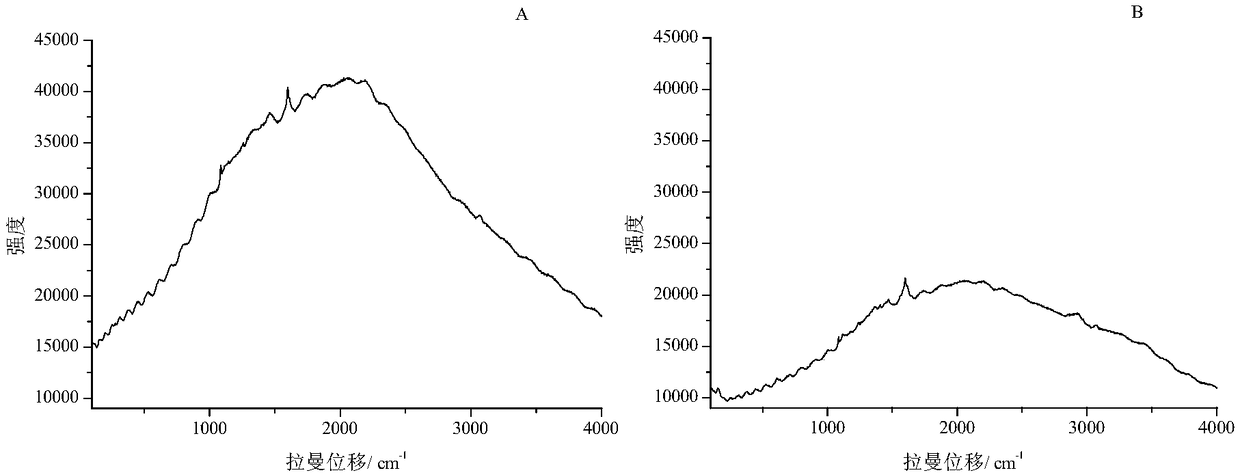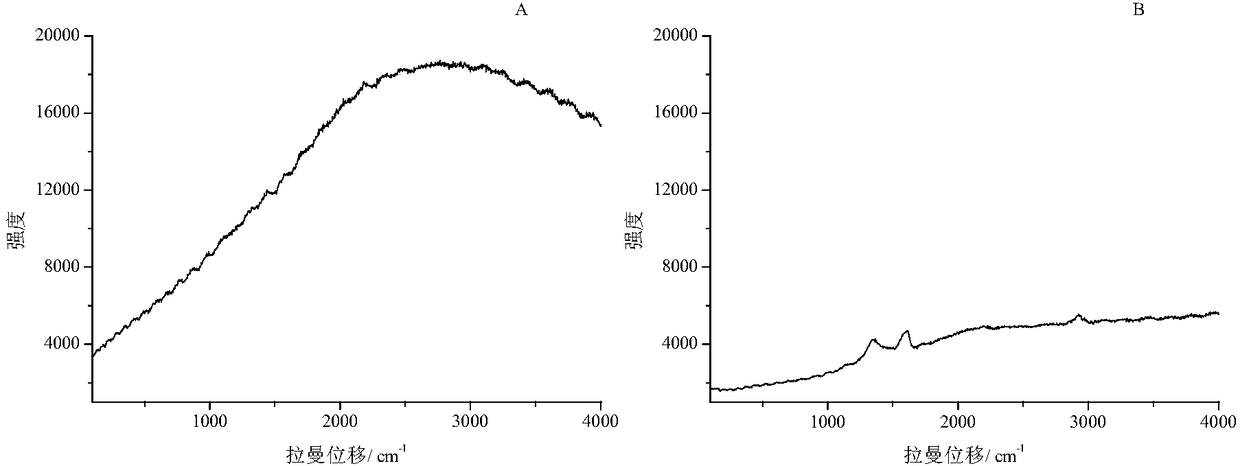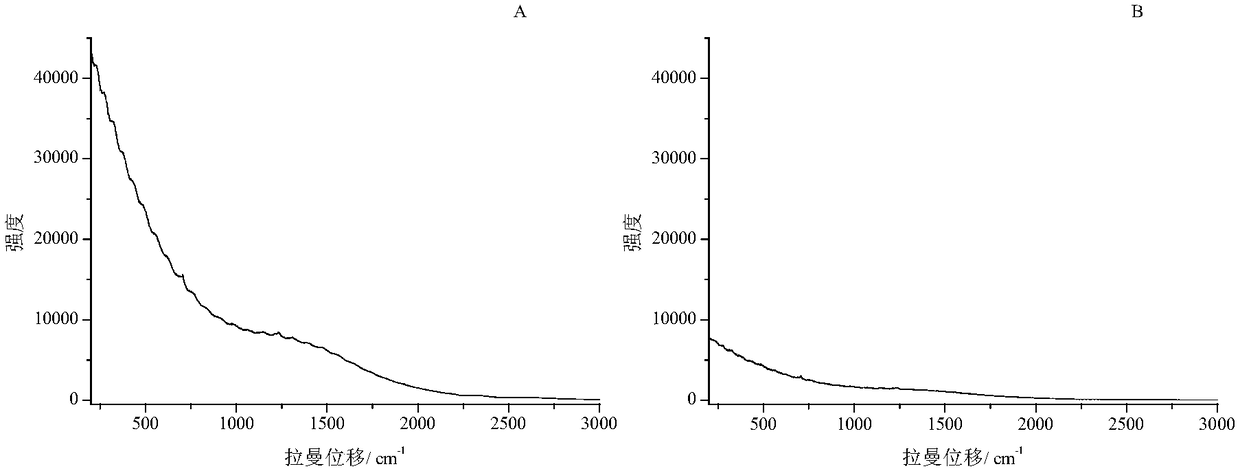Method for quenching fluorescence by using nanometer silver sol in Raman spectroscopy
A nano-silver sol and Raman spectroscopy technology, applied in the field of analysis and detection, can solve problems such as infeasibility, and achieve the effect of simple and easy sample preparation method
- Summary
- Abstract
- Description
- Claims
- Application Information
AI Technical Summary
Problems solved by technology
Method used
Image
Examples
Embodiment 1
[0022] The samples in this embodiment are epoxy resin boards. The sample is a commercial product with a yellow appearance and a thickness of 1 mm. Through infrared spectrum analysis, it is confirmed that the polymer therein is indeed an epoxy resin, and the main component of the filler is calcium carbonate (CaCO 3 ), and a small amount of glass fiber. Pure epoxy resin shows strong fluorescence in Raman spectrum, and the sample shows strong fluorescence due to the high content of filler in this product. Carry out Raman spectrum detection to the sample of this embodiment, implementation method is as follows:
[0023] (1) Sample preparation:
[0024] Saw a small piece of 0.5mm×0.5mm from the plate with a saw blade as the sample to be tested. Wipe clean surface with roll paper.
[0025] (2) Add nano-silver sol dropwise:
[0026] For bulk samples, drop a drop of nano-silver sol on the sample to keep the liquid in a hemispherical shape. Let it stand for half a minute and wait...
Embodiment 2
[0031] The sample of this embodiment is graphene, and its appearance is black powder. Due to the use of certain additives in the preparation process, the sample showed strong fluorescence, and the D peak, G peak and 2D peak of graphene could not be observed. Carry out Raman spectrum detection to the sample of this embodiment, implementation method is as follows:
[0032] (1) Sample preparation:
[0033] Take a small amount of sample and place it on a glass slide, add 2 to 3 drops of nano-silver sol dropwise on it, stir gently with a disposable pipette to mix evenly, and let it stand for 1 min to be tested.
[0034] (2) Raman spectrum detection:
[0035] The sample is placed in the reflected light path of the Raman spectrometer for detection. The instrument conditions are: excitation wavelength 532nm, power to the sample 0.6mW, 10X lens, grating 600gr / mm, pinhole 400μm, slit 100μm, accumulation time 10s, accumulation 4 times. When selecting a point, pay attention to selecti...
Embodiment 3
[0038] The present embodiment sample is carbon nitride (C 3 N 4 ), the appearance is a yellow powder, which is prepared by heating dicyandiamide at high temperature in a muffle furnace. Due to the control of the process, the carbon nitride sample only shows strong fluorescence, which is different from the usual carbon nitride samples that show extremely strong fluorescence. Carry out Raman spectrum detection to the sample of this embodiment, implementation method is as follows:
[0039] (1) Sample preparation:
[0040] Take a small amount of sample and place it on a glass slide, add 2 to 3 drops of nano-silver sol dropwise on it, stir gently with a disposable straw to mix evenly, and let it stand for 2 minutes to be tested.
[0041] (2) Raman spectrum detection:
[0042] The sample is placed in the reflected light path of the Raman spectrometer for detection. The instrument conditions are: excitation wavelength 785nm, power to the sample 30mW, 50X telephoto lens, grating ...
PUM
| Property | Measurement | Unit |
|---|---|---|
| particle size | aaaaa | aaaaa |
| wavelength | aaaaa | aaaaa |
Abstract
Description
Claims
Application Information
 Login to View More
Login to View More - R&D Engineer
- R&D Manager
- IP Professional
- Industry Leading Data Capabilities
- Powerful AI technology
- Patent DNA Extraction
Browse by: Latest US Patents, China's latest patents, Technical Efficacy Thesaurus, Application Domain, Technology Topic, Popular Technical Reports.
© 2024 PatSnap. All rights reserved.Legal|Privacy policy|Modern Slavery Act Transparency Statement|Sitemap|About US| Contact US: help@patsnap.com










